It was a warm afternoon in late July when my husband and I were on our way to the top of Fourvière hill. We’d just finished doing a self guided tour through old town Lyon when we looked at the time and it was about 25 minutes to 2 p.m. We walked to the Vieux Lyon metro station to take the funicular uphill. This funicular line has been in use since 1900 and it costs 2.80 euros for a round trip on the same day. As we went up I noticed on the sides several remains of statues on display. The fun trip lasts two minutes in each direction.
We exited the funicular and right in front of us there was the Basilica of Notre-Dame de Fourvière. It’s a beautiful building with colonnades, statues, towers and intricate details. The basilica was built in the late 19th century and Fourvière is dedicated to the Virgin Mary, to whom is credited the salvation of the city of Lyon from the Black Death, which devastated Europe in 1643. As a thank you, every 8th of December candles are lit throughout the city, what is called the Fête des Lumières, or Feast of Lights. This organized event attracts 4 million visitors over a four-day period.

While it’s free to enter the basilica, I highly recommend doing the behind-the-scenes tour where you can check out interesting places of the church, including: the big tribune gallery, the architects’ office, the gallery of the angels, the attic, the big carillon, the Saint Michel terrace and climb to the top of the observatory tower to enjoy panoramic views of the city. At the time of booking the tour it was only offered in French, yet, this didn’t dissuade us from enjoying this unique activity as we were mainly interested in climbing to the rooftop and take in spectacular views of the city. The tour started a few minutes past 2:30 p.m. in the octagonal tower to the right of the main entrance.
There were about 15 people in our group. The guide, a young lady, briefed us on the history of the basilica and indicated, pointing at a 3-D model, the route of our tour. While listening to the guide, I understood a handful of things, but it would have been better to have the tour in English or Spanish. Nonetheless, I didn’t feel intimidated as we were part of a large group, so all we needed to do was follow the pack. After the few minutes of historical background, we went up the spiral staircase.
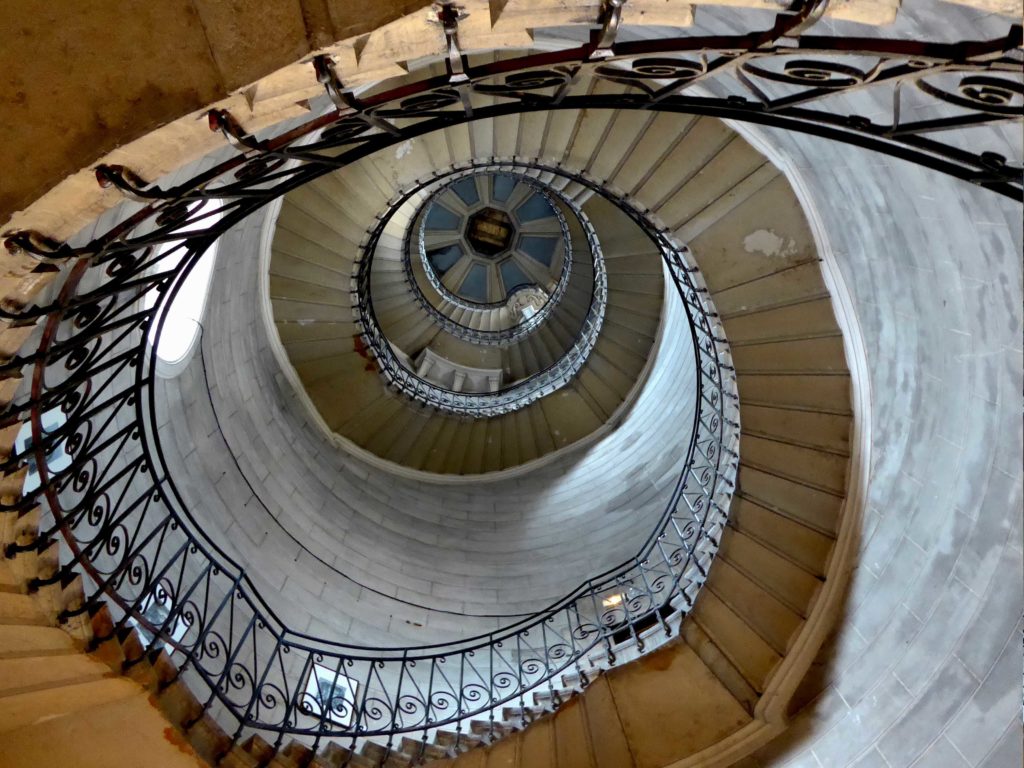
About halfway thru, we went into the tribune gallery. As I peeked thru the arches I had an excellent view of the basilica below. It’s amazing to see the intricate details, statues and mosaics from this vantage point. We then proceeded into the architects’ office, a round room with old desks and chairs, archive cabinets and old books. There was nothing in the middle of the room. The guide explained a particularity about the room, but I was only able to make out when she said something like: does someone want to try it? After a few long seconds of silence, one person walked to the middle of the room and said a word out loud. She instantly moved away from the middle and affirmed what the guide had explained; seems like she was scared a bit. Then, as more people stood in the middle of the room and said a word aloud, they reported hearing or feeling something—that’s what I understood. Perhaps the guide mentioned that there was something supernatural going on in that room. Whatever that was—it sounded like something creepy, but fun at the same time.
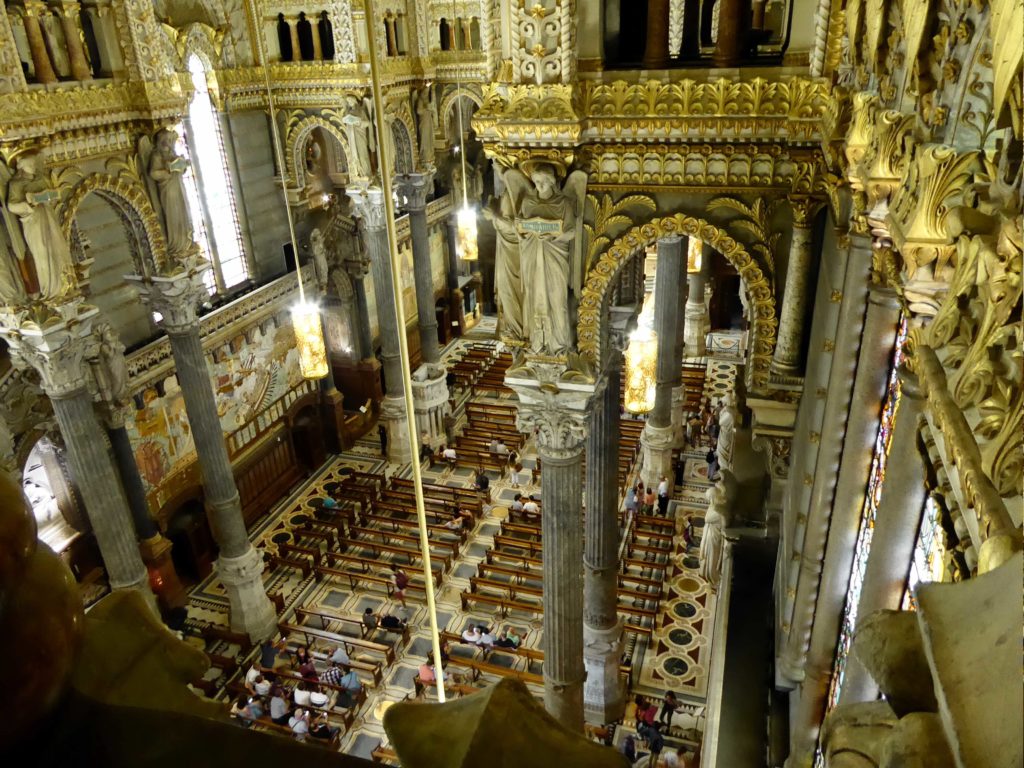
After we exited the architect’s office, we proceeded to the gallery of angels and the attic. There were several angel statues on a display case and fragments of statues on the floor. Here in the attic I saw the grey and dusty domes that make up the lavishly decorated ceiling in the interior of the basilica. Once the guide was done telling us about the angels we proceeded to the carillon.
As we entered the carillon, we walked a portion of the rooftop and noticed it had stopped raining. There are 23 bells—covered in patina—and the guide rung two of different sizes so we could learn about the different sound each bell makes.
Our group walked across the rooftop and we were right below the statue of Saint Michel. From this terrace we could see the Saône and Rhône rivers, old town Lyon, the Cathédrale Saint-Jean Baptiste, Place Bellecour and much of the west side of the city. But the views were just about to get better. After capturing photos and admiring the panorama before us, we took a short spiral staircase inside the observatory tower and upon exiting, we were treated to a 360-degree view of Lyon—this was amazing. I found it very interesting to see three-dimensional charts all around the edge of the observatory that depicted distances to other cities and towns from the basilica’s point. The tour lasted nearly two hours.
Overall, I loved this tour, despite the fact of not fully understanding the guide. I walked away happy with memories of those stunning city views—something I don’t get to see often.

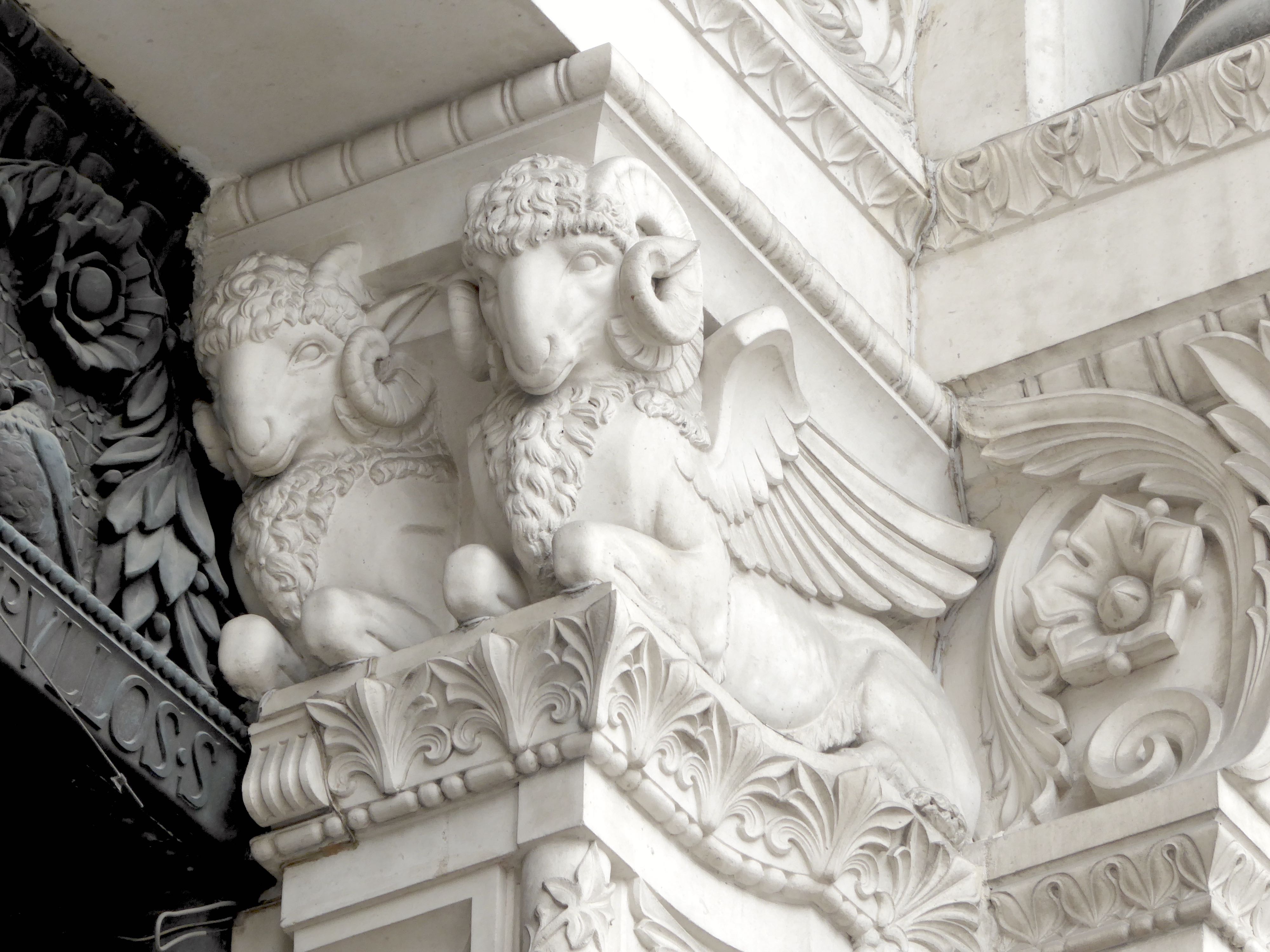
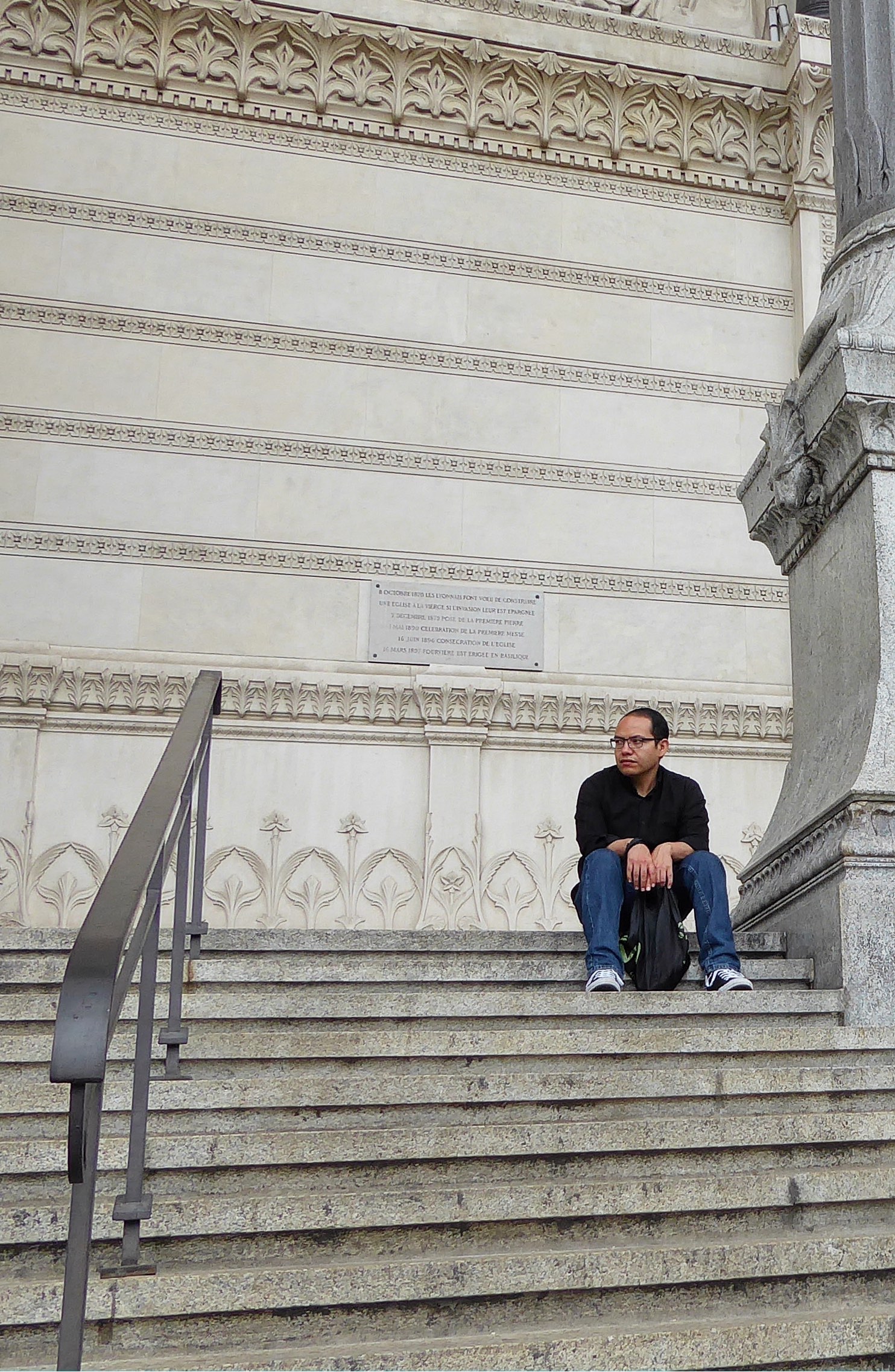

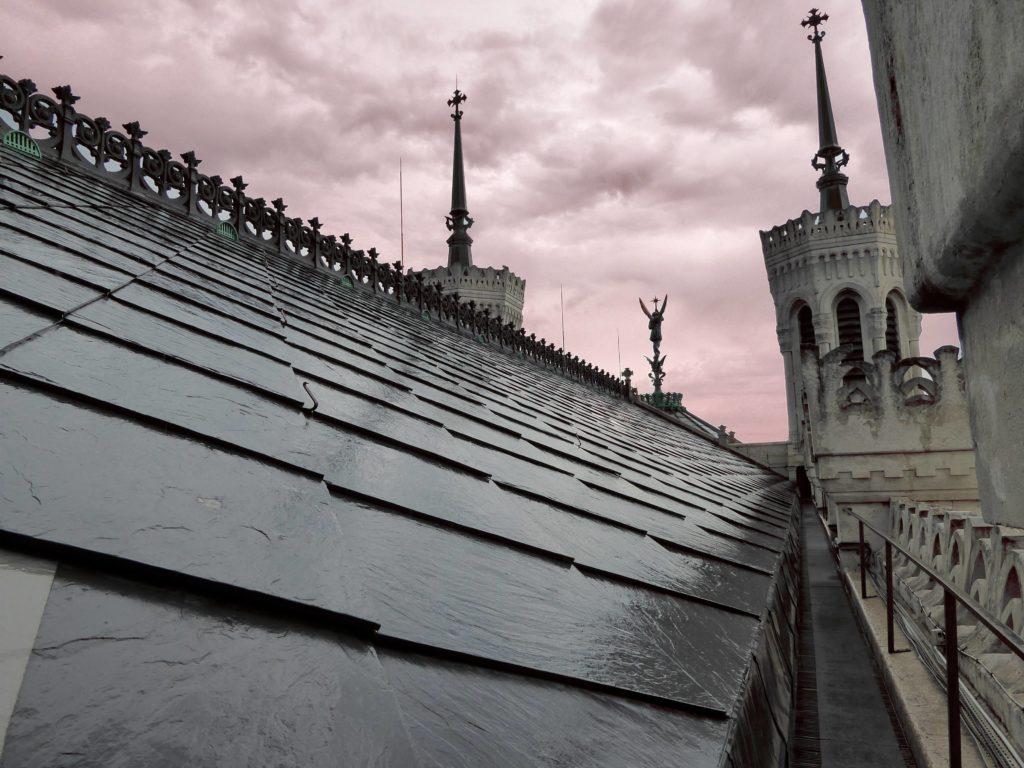
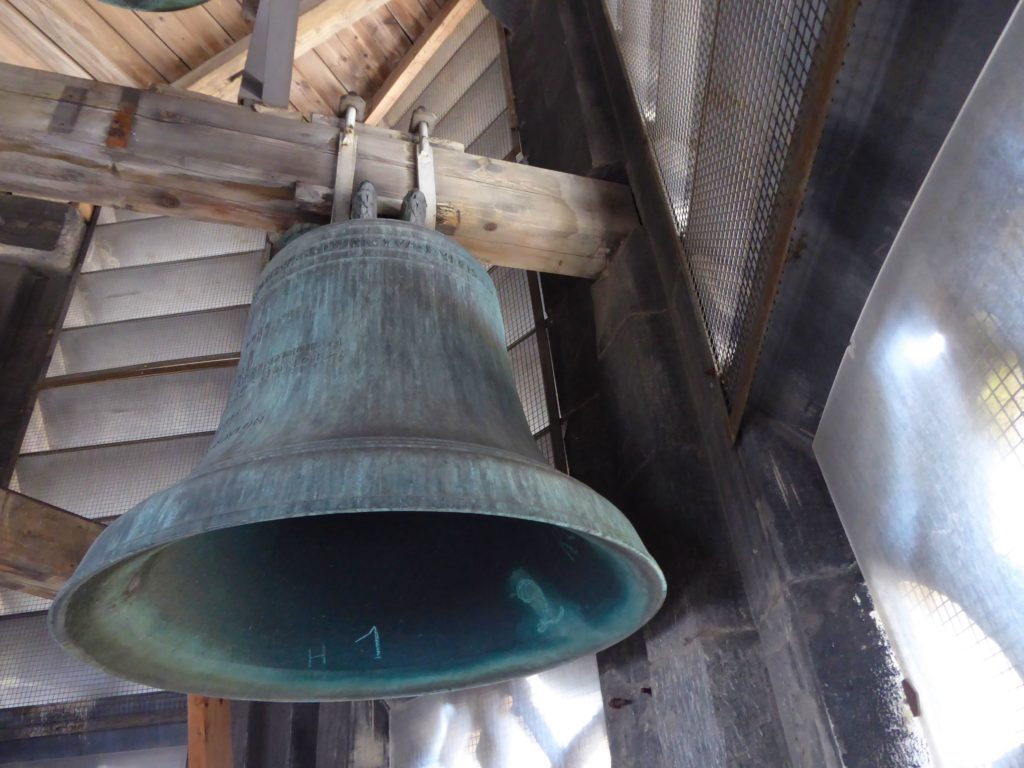

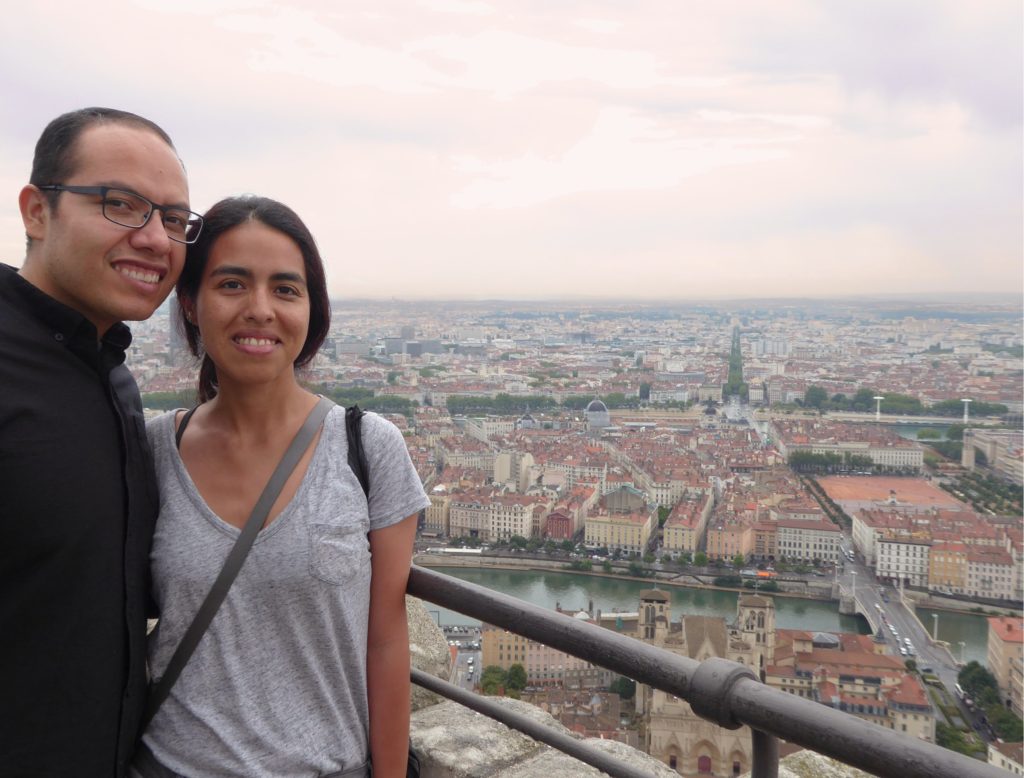
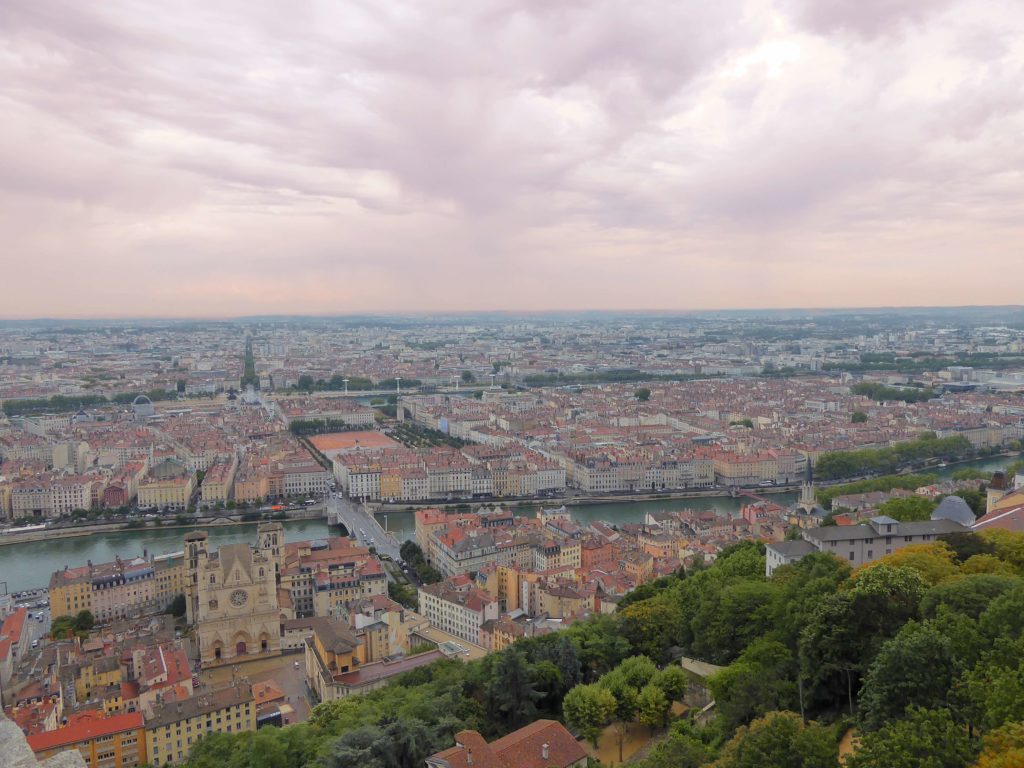
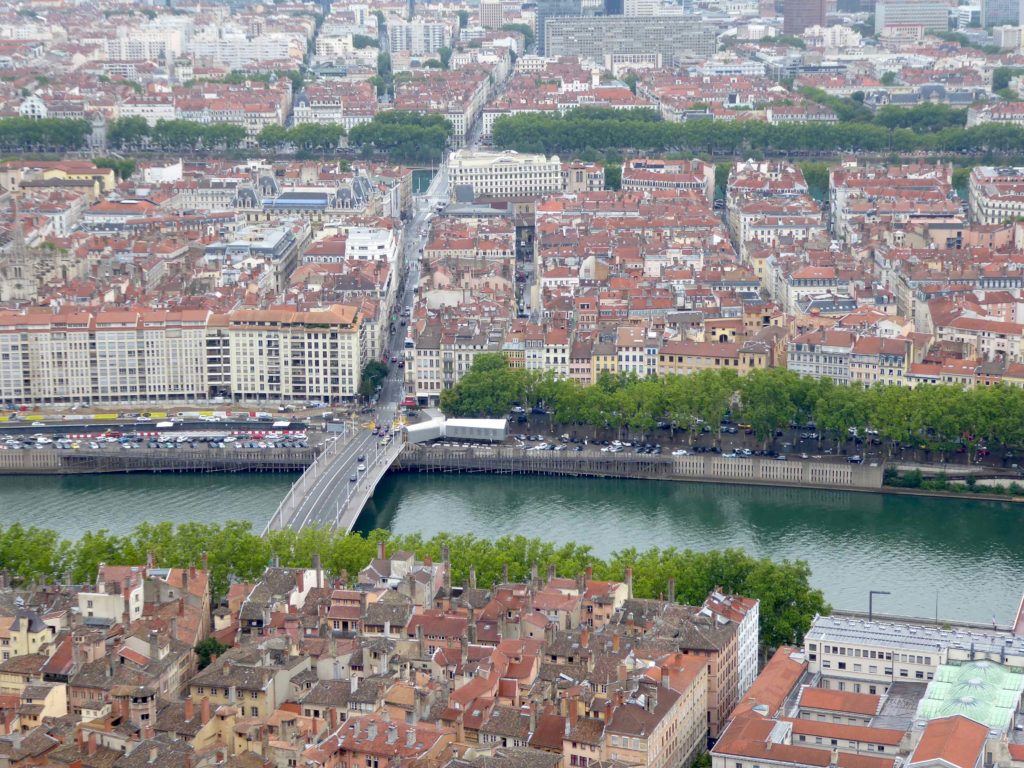


nice! great tour! But i want to see the pictures of Michelle posing right next to the statue of Saint Michel slaying the dragon!
Yeah, he should’ve posed with his “tocayo” 😉
That’s a really cool place. Looks amazing. Great pix. I like the one of “up or down”.. I had to look at it for a long time, confusing indeed. But after extensively analyzing it, it’s looking up. That’s the ceiling of the dome. 😉
That spiral staircase can be confusing, but, yes, you figured it out 🙂
What dramatic pictures. It’s almost like we are there with you.
I’m glad I was able to virtually bring you along, Phil.
Such a beautiful city and spectacular views. Great photos!!!
Thank you! 🙂